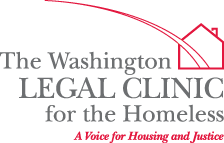Today, Councilmember Jim Graham, Chair of the Committee on Human Services, is holding a public oversight roundtable on “The Winter Plan: Protecting the Lives of Homeless People in the Winter of 2013-2014.” You can tune in to the roundtable here.
Amber Harding and Scott McNeilly of the Legal Clinic testified before the Committee earlier this morning. The following is testimony delivered by Amber Harding and we will post Scott McNeilly’s testimony later today.
On January 7th 2013, a hypothermia alert was called at about 3PM. About an hour later, a seven month pregnant 23 year old woman completed her interview for family shelter at the Family Resource Center. The intake worker noted that she was seven months pregnant (and therefore qualified as a “family” under the HSRA), that she had slept on the corner of 7th and H Street NE the night before and had nowhere safe to sleep that night, and that she needed emergency housing assistance that day. She received a housing stability score of “0.”
I met this woman, now with an infant daughter, nine months later. She was not placed in shelter that night or any other night last winter when she had nowhere to go. She was given no lawful notice, nor any reason for the refusal to place her. A simple paper review of this file would have turned up this wrongful denial.
When I raised this case to the attention of DHS and the Community Partnership, they agreed to place her immediately. This family, like the other families we highlighted inour report last winter, was wrongfully denied on a night where she could have developed hypothermia, or even died, sleeping outside. Like the other families we represented last year, who comprised 20% of the placements during hypothermia, she was only placed when a lawyer got involved.
When I reviewed this client’s file, I felt anger and frustration, even sadness, but not surprise. All last winter we expressed concern that the cases we were seeing indicated a much more widespread problem. Because DHS and the Partnership almost always agreed with our assessments of cases when we brought wrongful denials to their attention, we assumed that the problem lay with the contractor, and so we tried to work collaboratively and constructively on a solution. We drafted policies and protocols we thought would be helpful at increasing compliance. We released our mid-season report detailing many of the legal violations we had seen so far and giving concrete recommendations for preventing further violations. But, as far we can tell, none of our recommendations was adopted.
When this Committee held an oversight hearing at DC General last winter, what was striking was that almost every family who was questioned about their experience prior to entering DC General revealed that they had spent multiple cold nights outside, despite pleading their case with the Family Resource Center, before they were finally placed in shelter. With past as prologue and with no sign of major reform to interrupt these patterns, we are heading into a rough winter season for families. We have tried to work in partnership with the government and its contractors, but our obligation to our clients is to pursue the most effective strategies, not necessarily the most collaborative ones, particularly when our clients are trying to access basic lifesaving services to which they are legally entitled.
As we’ve testified about repeatedly over the last few years, we have seen DC slowly whittle away at the right to shelter. First, the policy baseline that families should have access to emergency shelter year-round was dropped to the legal baseline of access only on freezing nights. Then, the Council scaled back the right to access shelter even on those nights by creating several new eligibility hurdles that are only (and discriminatorily) applied to families.
Now, this Administration is attempting to chip away the right to shelter even more by reading the Homeless Services Reform Act as excluding unaccompanied youth under the age of 18 from its protections. We find this interpretation of the law not only legally unsustainable, but also deeply concerning for what it foretells about the response to homeless youth this winter. For every other population represented in the Winter Plan, the understanding is that the plan represents the floor of what will be done to ensure access: if more space must be found because the need is greater than anticipated, then more space will be found. But if the Administration believes that youth are not legally entitled to shelter on freezing nights, will they provide the space needed to ensure that every youth has a safe place to go this winter, even if it ends up being more space than the Winter Plan contemplates?
We agree that comprehensive plans must be developed to better serve all who are homeless. But in the meantime the District must make sure that it meets the very basic goals outlined in the Mayor’s Order 2001-161, dated October 31, 2001 (Purpose):
… to identify vulnerable homeless people living in exposed, unprotected areas and provide immediate access to shelter and services… to save lives and prevent serious injury that can be caused by extended exposure to severe winter weather conditions.
DC residents should not be risking life and limb while they wait for more enriched services.





